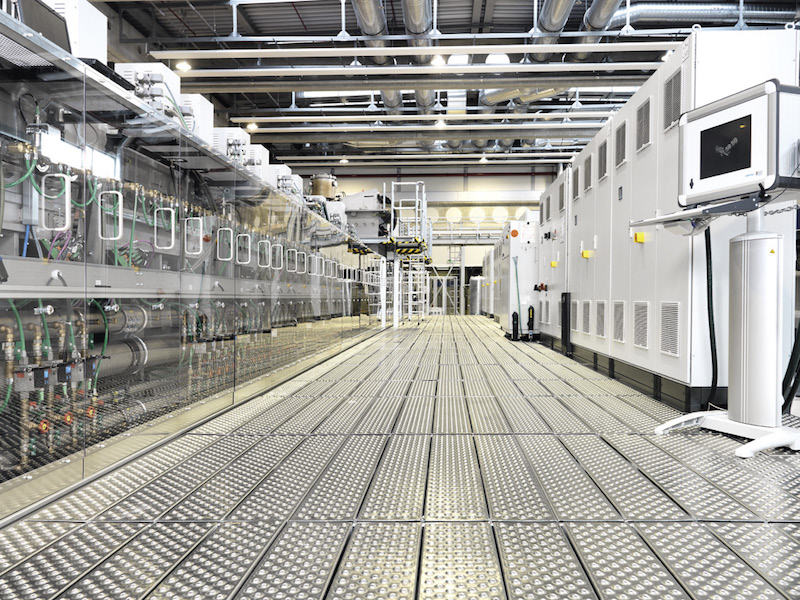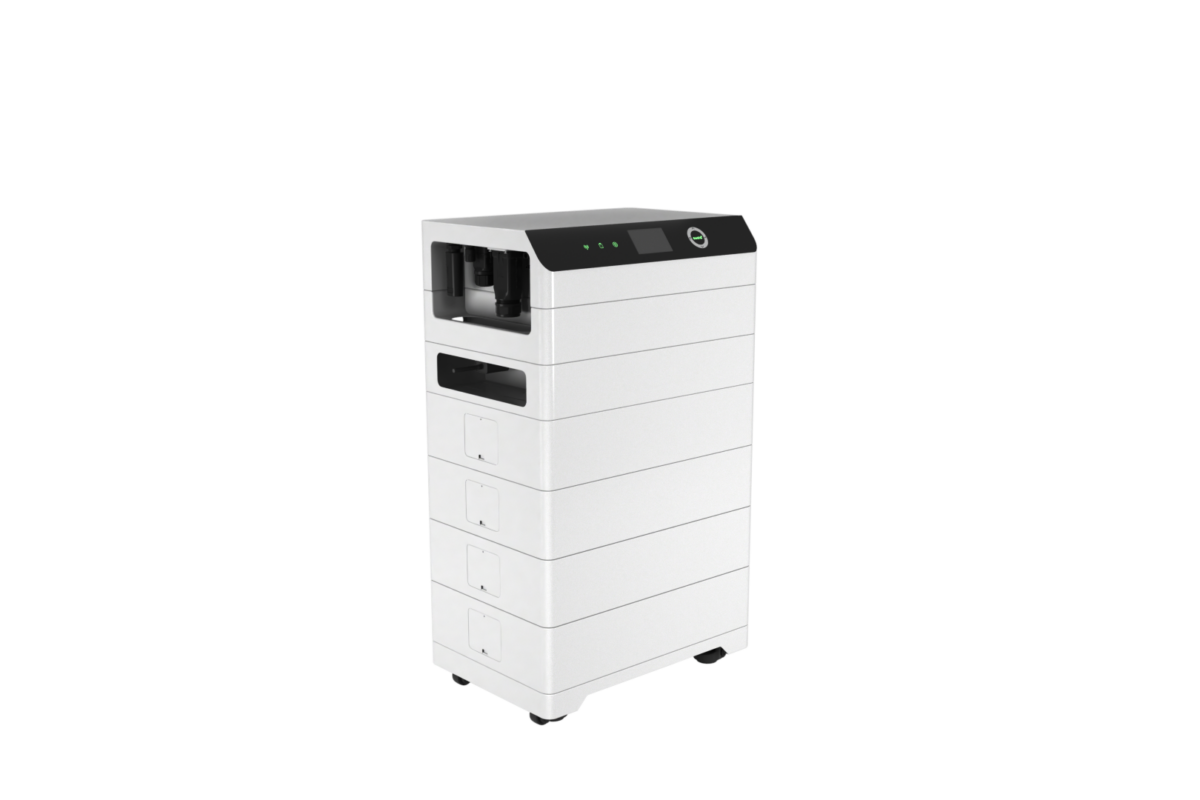As the global production capacity and output of crystalline silicon (c-Si) PV manufacturers has skyrocketed, CIGS manufacturing has crept up only slowly. Concurrently, the list of failed companies attempting to commercialize the technology has grown.
This reality was certainly not news to the attendees of the IW-CIGSTech 9 conference, hosted at the Center for Solar Energy and Hydrogen Research Baden-Württemberg (ZSW) last month in Stuttgart. The attendees themselves turned out at the 2018 CIGSTech forum in record numbers, around 150, reflecting that all is far from lost when it comes to CIGS technology itself.
Pioneer at scale
Copper indium gallium selenide (CIGS) solar cells and modules have a long history. Indeed, the world’s largest CIGS producer Solar Frontier, through its parent Showa Shell, has been working on CIGS since the 1970s. The Japanese company has since shipped 5.5 GW of CIGS modules and currently claims to hold a swag of world records for CIGS cell, aperture, mini-module, and module efficiency. Solar Frontier’s latest ‘champion’ module, rolling off its production lines at its 900 MW Kunitomi facility in Miyazaki, has achieved an efficiency of 16.8% – with an output of 193 W. The company’s goal is a 20% module at an output of 220 W by 2020.
Speaking at IW-CIGSTech 9, Hannes Schneider, the Technical Director at Solar Frontier Europe noted that the company is “very active” in developing BIPV applications, including flexible modules – expected to be introduced outside of Japan at the end of this year.
The 20% and 220 W target is common to a number of CIGS veterans. At the June forum, Solibro set out its pathway “towards a 20% module.” The Swedish CIGS pioneer has legacy production in Germany and 1.2 GW of manufacturing under development in China – through its parent Hanergy. Olle Lundberg, VP Research & Development at Solibro Research, pointed to the company’s 18.7% module efficiency, which currently tops that of thin film giant First Solar – at 18.6%. Lundberg noted a number of “production scalable” innovations that led to the 18.7% module record, and 22.2% cell efficiency milestones – the latter on a 1 cm2 cell.
CdTe and CIGS head-to-head
The comparison with cadmium telluride (CdTe) thin film producer First Solar is a striking one. In June, First Solar broke ground at a massive new factory at Lake Township Ohio, where it will produce 1.2 GW of its large-format Series 6 thin film modules. This fab alone, which will sit alongside its 600 MW Perrysburg, Ohio fab that was itself the first to commence upgrade to the larger Series 6 format.
Including its U.S. manufacturing, the expansion of which has been aided by solar import duties imposed by the Trump Administration, First Solar is currently targeting a manufacturing capacity of 7.6 GW of by the end of 2020 – although due to its upgrade activities has a 2018 output of 2.6 GW. It is instructive that on its new Series 6 module platform, First Solar targets expansion intervals of 600 MW – with the proposed new facilities in the U.S., Vietnam, and Malaysia all sized at 1.2 GW – or 2 × 600 MW.
The company reports that 90% of its 2 m × 1.23 m Series 6 modules that are currently rolling off production lines – at least those that have completed the upgrade to the larger format – have a power output beyond 400 W. In its Q2 2018 earnings call, the company reported: “Over the next 90 days, we see a clear path to an average production band of 415 W and a top band of 425 W. Furthermore, the early module wattage gives us confidence in our long-term road map which takes us beyond
425 W per module.”
Manufacturing plans for CIGS
This manufacturing output and capacity plan far exceed anything on the CIGS horizon. Although the much-heralded Chinese expansion of CIGS manufacturing points to that potentially changing – if, that is, the plans are realized. In December 2017, Avancis announced that the first module had been produced from its 300 MW line at its production facility in Bengbu, Anhui Province, China. Avancis was acquired by state-owned Chinese building materials giant CNBM in 2014. CNBM has announced its intention to expand the Bengbu plant to 1.5 GW over time, part of an ambitious plan to realize 5 GW of CIGS production in China.
“There are intrinsic advantages of thin film, that is: less material and energy usage in production,” explains Helmoltz-Zentrum Berlin’s (HZB’s) Rutger Schlatmann, who has also been co-chair of IW-CIGSTech since 2009. “It’s true that you can only see it if you reap the economies-of-scale benefits. This is the challenge and the fundamental reason why CIGS could be successful if demonstrated at the gigawatt-level.”
CNBM is also not alone in its gigawatt plans for CIGS in China. After bringing Shanghai Electric onboard as a major investor in 2016, Manz attracted a major Chinese player in coal-generation giant Shenhua Group as a purchaser of its CIGSfab. A tri-party joint venture structure was agreed to by the three parties, to pursue equipment production in China, R&D efforts both in China and Germany, and an initial 306 MW production in Chongqing. Manz’s update last month was that “everything is progressing according to plan,” according to Hannes Reinhardt, Vice President of the Solar Business unit at Manz. He goes on: “3,500 tons of high-tech equipment are making their way to the Yangtze – an amount equal to about 300 containers.”
“If you look at the new mother companies of Manz and Avancis ventures [Shanghai Electric, Shenhua, and CNBM respectively], they are really big companies,” observes HZB’s Schlatmann. “If these advantages can be reaped, in terms of efficiency and in production – bill of materials, the equipment uptime – as with c-Si and CdTe, then the question is, why should it not be possible for CIGS to be a success?”
Technological progress
There is no doubt technological development of CIGS has continued as its c-Si and CdTe rivals have enjoyed the benefits of gigawatt-scale production. Indeed, the continuing progress from both research institutes, the companies that have received the large Chinese orders, and those that have seen truncated development, as a result of ownership by Hanergy has been notable.
Trading of Hanergy shares on the Hong Kong Stock Exchange has been halted since its dramatic loss of market capitalization in 2016. It appears that even in the face of adversity innovation continues in CIGS production and related technology.
Both Avancis and Manz representatives presented at IW-CIGSTech9, demonstrating growing mastery of CIGS technology on both the module design and production equipment levels, and in new areas such as colored modules for BIPV applications. “Aesthetic quality is becoming more and more important,” noted Thomas Dalibor, Senior Manager Process Development at Avancis.
The company’s PowerMax Skala modules certainly make for a striking addition to the PV landscape, and Dalibor elaborated on the company’s ongoing work in building understanding as to how the different module color variants impact module power output, and also the long-term stability of the color itself – an important consideration for architects and building designers.
A comprehensive list of technological innovations global CIGS researchers are investigating and deploying was presented at IW-CIGSTech 9.
These include: alkali post-deposition treatment, potentially increasing carrier lifetime; cadmium-free CIGS production, for an eco-friendly PV module and a key differentiator to CdTe; metal grid contacting, delivering increased cell current; sulfurization as a pre-treatment, which is showing promise yet is not fully optimized; and progress in reducing secondary phase crystal formation in the CIGS semiconductor, which has been shown to reduce cell open circuit voltage.
One of the potentially disruptive technologies, being developed by CIGS researchers in a number of labs globally, is CIGS deposition on polymer substrates – potentially opening the way for low-cost, flexible module production.
“The technology is developing both for [crystalline] silicon PV and CIGS,” notes HZB’s Schlatmann. “Whether we will see if these really big companies, Shenhua and CNBM, can really get production geared up and at a reasonable cost level through vertical integration is an open question. As a research institution, it is difficult to quantify the bill of materials and the investment cost [in large scale production]. What is in our sights is up to 17-20% on a module level.”
This content is protected by copyright and may not be reused. If you want to cooperate with us and would like to reuse some of our content, please contact: editors@pv-magazine.com.




CIGS and CdTe non silicon based, lab made solar cells survived and redeveloped again to flourish market. As we have seen in the writing both solar cells efficiency as well as the out looks have been changed in a positive way. It’s such an encouraging news for the solar cell developers in Material & Characterization centers in big universities world wide. Once I worked on an Organic Photo Voltaic (OPV) project, so I have some experience on those OPV roll production technique.
I appreciate the effort behind for producing these cells with high efficiency. At the end, these low cost, lower weight solar cells eventually help to make our Earth greener.